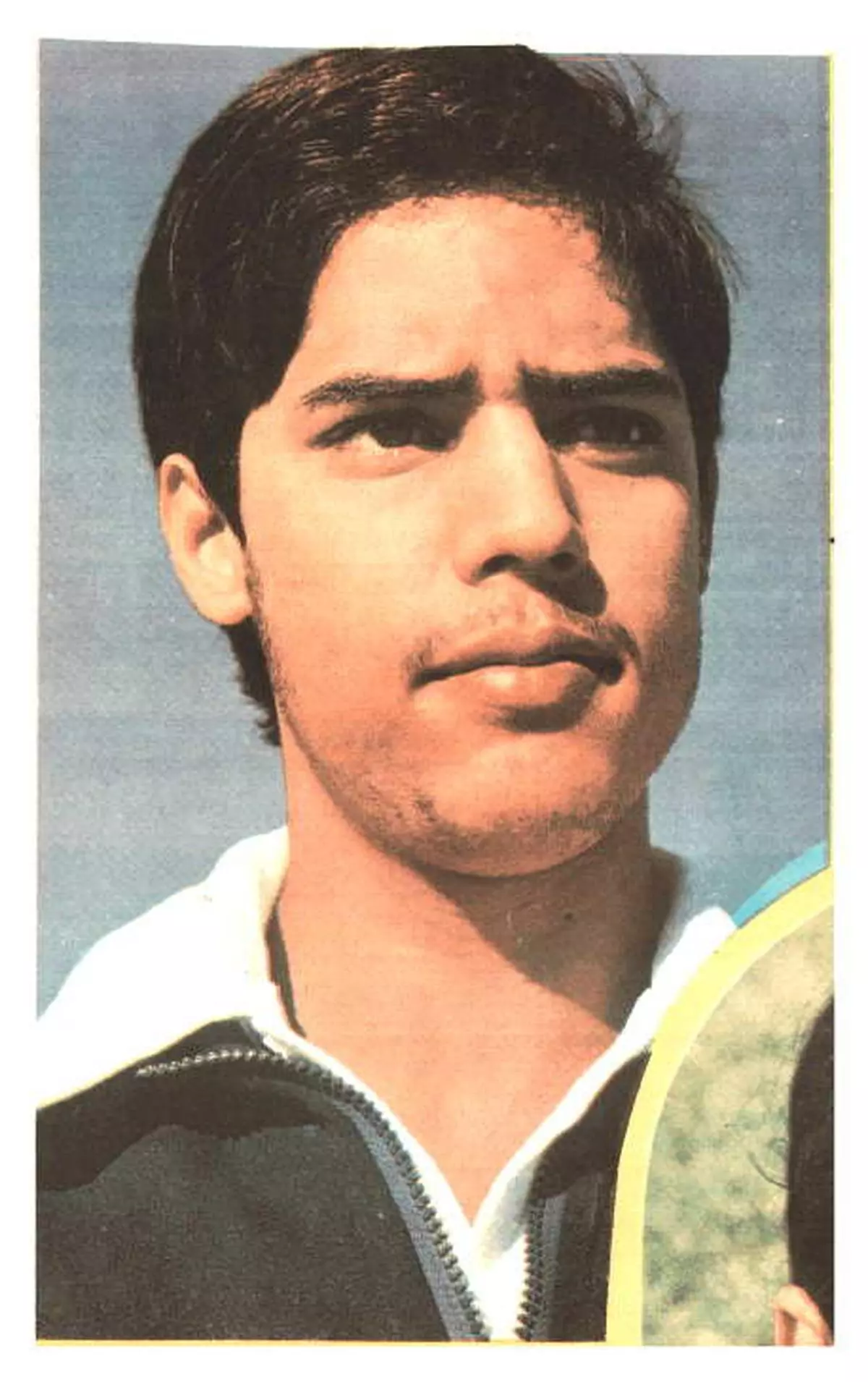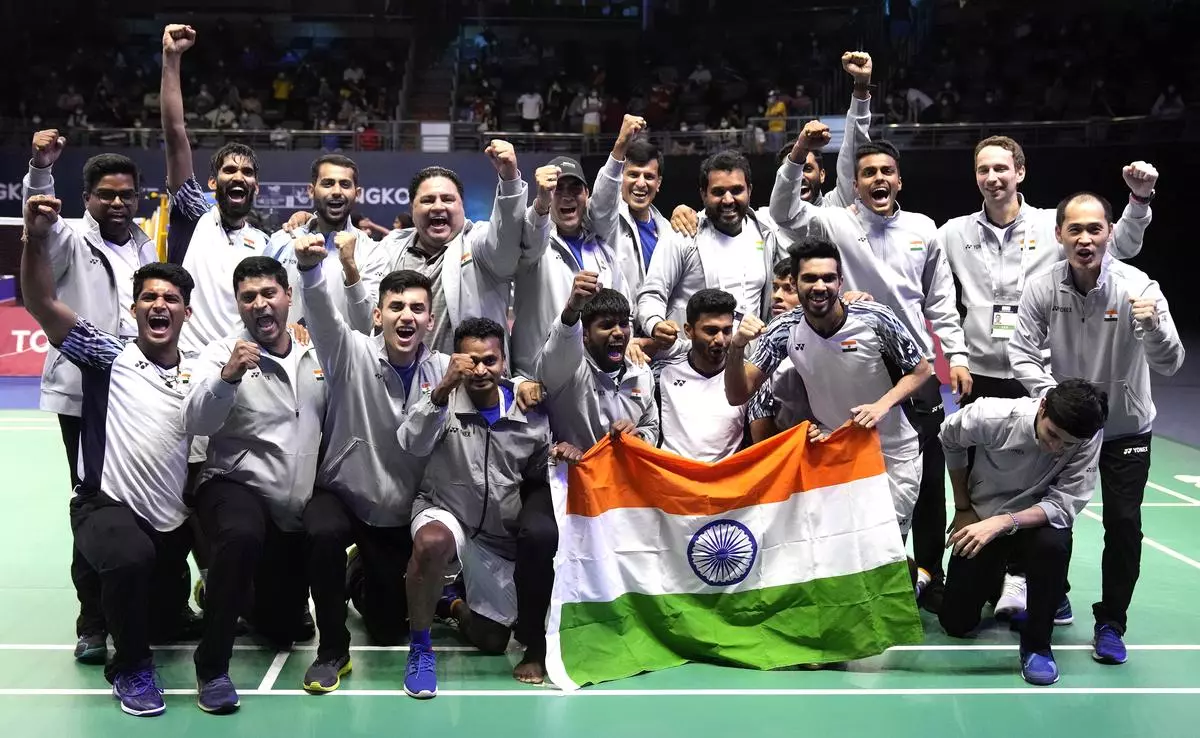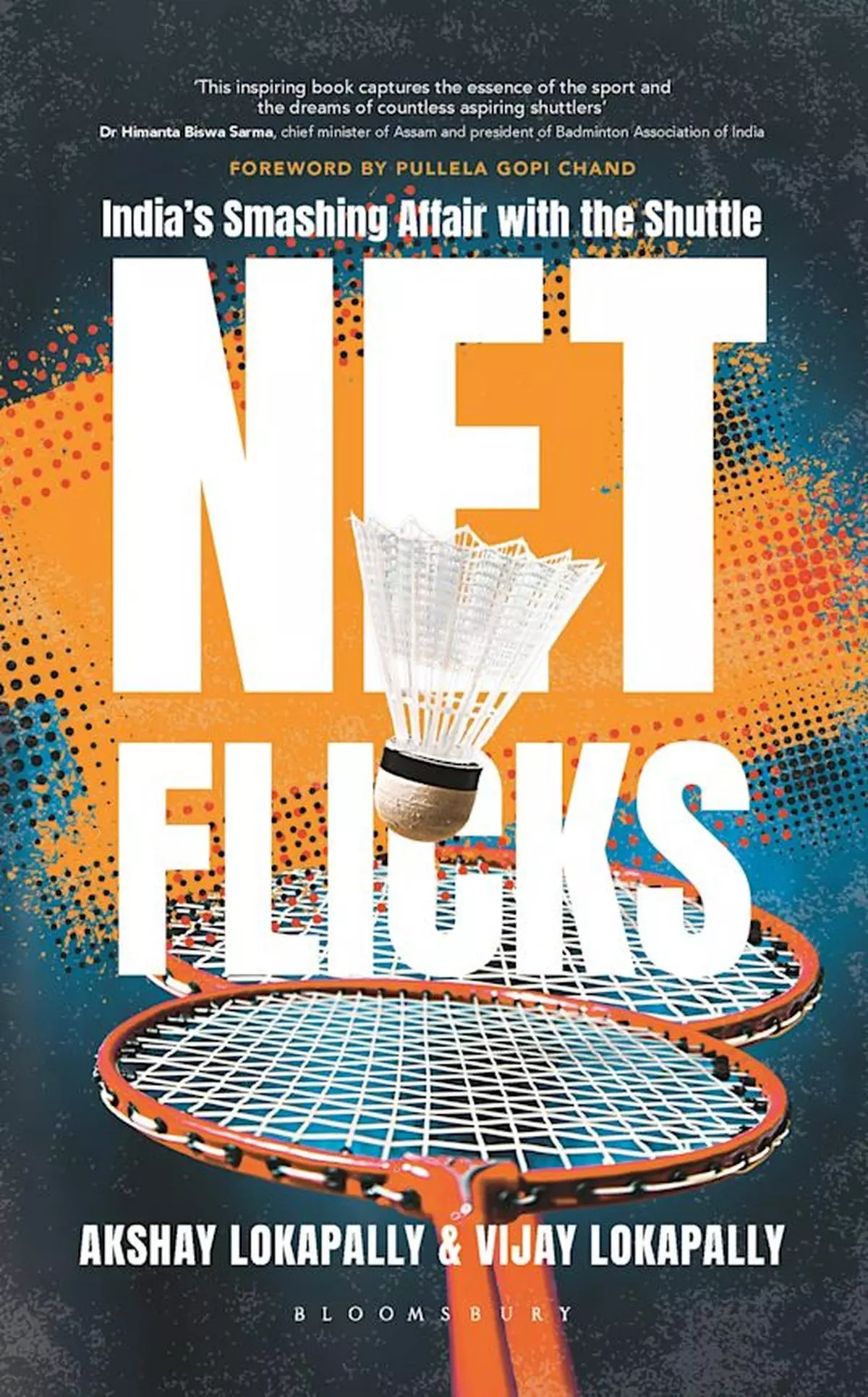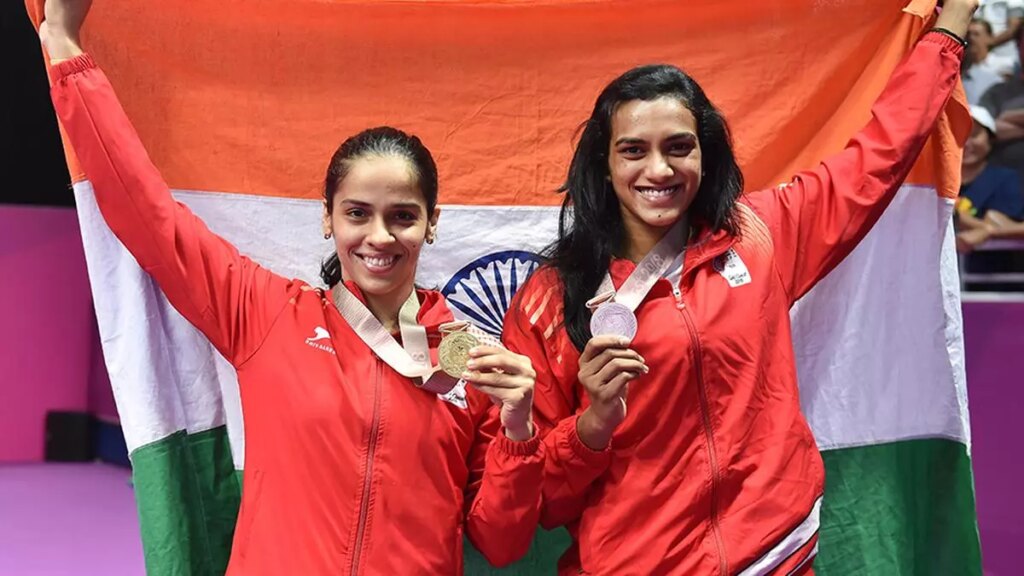In the foreword to the imaginatively titled Net Flicks: India’s Smashing Affair with the Shuttle, a history of Indian badminton, the legendary former player Pullela Gopi Chand writes of the “remarkable journey for Indian badminton” from the early years characterised by a lack of facilities to the current era when our players have “access to the best training, equipment and infrastructure”. Through numerous profiles and anecdote-filled chapters, the book’s co-authors, Vijay Lokapally and Akshay Lokapally, narrate and celebrate this journey.
While this is Akshay’s first book, Vijay was a sports journalist at The Hindu and Sportstar and has five more books to his credit, including the bestselling biography Driven: The Virat Kohli Story (2016). In a freewheeling conversation with Frontline, the father-son duo talks about heroes known and unknown and the state of Indian badminton today, among other things. Edited excerpts:
Everyone assumes that India’s badminton journey began with Prakash Padukone. But your book drops a bit of a bombshell—instead, you introduce readers to Prakash Nath’s All England adventure. Could you tell us about this original Prakash and the drama that followed?
Vijay Lokapally: A cricketer friend of mine, K.B. Bhaskar, called me a year or two ago to tell me that his classmate was the daughter of a badminton player who had reached the All England semi-finals—and even the final. I was intrigued. Who was this Prakash Nath?
We contacted his daughter, who lives in Delhi, and through her, we unearthed some fascinating details. Akshay and I then delved deeper, spending time at the Nehru Memorial Library, as well as the archives of The Hindu and Sportstar.
What we discovered was incredible. Prakash Nath was an exceptional player who never got the recognition he deserved. His name was barely mentioned in modern badminton narratives—almost as if he had been forgotten. His story is one of resilience. When we met his daughter, she shared what she had heard from her father about his journey back from Lahore during Partition. He often spoke about the heartbreak of being “ejected from his homeland”.
His story is a powerful one. It’s not just about badminton but about overcoming personal and historical upheavals. Researching this chapter—and the entire book—required an immense amount of hard work, but it was well worth it.
Also Read | Lifting the gauntlet
Moving on to Prakash Padukone: reading about his early days is like watching a sports drama where the hero has nothing but determination. In fact, you call him a “once-in-a-generation player”. So, how did he go on to become the badminton legend he is today, especially when most players today would not even step on court without their energy drinks or personal trainers?
Vijay: I’ve interacted with him a lot over the years. He used to write for us as well, and I’ve had plenty of close encounters with him. He’s an incredible, fascinating character who made it on his own.
To gather some lesser-known stories, I spoke to one of his friends. That’s how we got insight into the “other Prakash”—the one who wasn’t just on the court. When it comes to his playing days, I’ve covered a lot of Prakash’s matches, especially when he came to Delhi, and also his practice sessions. I was really fascinated by his practice sessions. For us, it was almost like watching a game. There were many times I’d be alone at the Indira Gandhi Stadium, watching him and his sparring partners. Those were the golden days—easy access to players, no security barriers. Watching Prakash in action, you could just sit there for hours, soaking in his skill and dedication. Prakash will always remain one of the true legends and a self-made champion.
Talking about women’s badminton: they say women often have to work twice as hard in sports—at least, that’s been the general trend in the past. Was this true for Indian badminton as well?
Akshay Lokapally: I specifically asked many of the female players we met about this. Interestingly, most of them said there was no bias, and they didn’t feel they had to work harder than their male counterparts. They believed everything was based on talent and how well they performed in both domestic and international events.
One specific example we encountered, which we mention in the book, is the Garuda shuttles [shuttlecocks]. These shuttles were of high quality, and initially, they were given first to the male players, while the female players had to use second-rate shuttles. But that was a practice that lasted for a very short period.
Vijay: Many of the female badminton players, especially in the 70s and 80s when the focus was more on male players, were unsung heroes. They continued to play despite limited support from the federation, which often treated them poorly. Yet, they carried on. Credit to those women players, who persevered without much backing.

Considered the next best to Prakash Padukone, Syed Modi was a star in his own right in Indian badminton and his unfortunate demise in 1988 marked a significant loss for the sport.
| Photo Credit:
The Hindu Archives
Let us take a darker turn for a moment—the Syed Modi tragedy. Could you tell us about this incident that shook Indian badminton?
Vijay: It was a huge tragedy. He was murdered. It’s a well-known fact that in Lucknow, where he was training, he was shot near the gate after leaving his practice. Ameeta [Singh], who had gone against everyone to marry him, went through a terrible ordeal. She was accused, and there was even a CBI inquiry, which we’ve covered in the book. She came out of it, and she’s been in touch with Modi’s family ever since. In fact, as you read in the chapter, she still maintains contact with them.
There’s a lot of mystery surrounding Modi’s death. He was an amazing player and, in many ways, an underachiever for his talent. His murder shook the country. Who knows what he could have achieved had he lived? After players like Nandu Natekar and Prakash Padukone, he was probably the player to watch, followed by Gopi Chand.
You mentioned Pullela Gopi Chand: He became the “Dronacharya” of Indian badminton, and you’ve titled your chapter on him “The Architect of Indian Badminton’s Renaissance”. Would you say that his coaching legacy is even bigger than his playing career?
Vijay: Absolutely. Remember, when Gopi Chand reached the All England finals and won the title, no one really gave him a chance. It was only then that people truly started to notice him. Even though he had been working tirelessly before that, his breakthrough moment made people sit up and pay attention.
I’ve had many interactions with him, and I find him to be incredibly humble. The most important thing about Gopi Chand is his vision for Indian badminton. He set up this academy: it’s a state-of-the-art facility, designed to train budding badminton players. He’s not just a coach; he’s a mentor who spends time teaching players the modern intricacies of the game.
What stands out most is the time he devotes to his players. He takes their issues to the government, fights to get competitions organised, and works hard to send them abroad for international events. Most of the players you see today have benefited from his guidance at some point in their careers. Gopi Chand is truly the Dronacharya of modern Indian badminton. And the proof of his impact is clear—he’s trained champions who’ve gone on to win Olympic medals. What more can you ask for?
Pullela Gopi Chand being hugged by Prakash Padukone for becoming the second Indian to win the All England Championships in 2001, in New Delhi on March 14, 2001.
| Photo Credit:
RAJEEV BHATT
On the mention of Olympic medals, my next question is about those two Olympic medallists: Saina Nehwal or P.V. Sindhu—who’s the more complete player? How do you compare the two?
Akshay: It’s hard for me to pick one over the other. Both Saina and Sindhu had their own challenges and their own journeys. In fact, when Saina had already made her mark or was in the process of doing so, that’s when Sindhu started coming into the picture. It felt like fate, as we had one after the other.
Their games may have some similarities—both rely on power play, which is something that Indian badminton hadn’t seen much of before. In the past, players focussed more on craft and deception. But badminton has evolved over the years, and their power-driven approach was a refreshing change. So, if I had to compare them in terms of their playing style, that’s where I’d see the similarity.
Some former players say that modern players do not have the same sense of camaraderie as before. Has Instagram replaced actual conversation in the players’ lounge?
Vijay: Times have changed. Earlier, badminton players on a tour or after a match, during a tournament, had enough time to converse with their colleagues, analyse each other’s game. There was no social media back then, and there was no other form of entertainment for them. They couldn’t just retreat to their rooms and bury themselves in their cell phones, Instagram, Twitter, Facebook, and all that. Those options didn’t exist. Instead, they found entertainment in the company of each other. After a day’s play, during a camp—especially camps—they were together and would go out for dinner. These moments brought them very close, and there was healthy competition. They’d acknowledge each other with respect.
Akshay: From what I’ve heard from the players, they used to love how, during camps and practice sessions, they’d explore the city together, which is something we can all relate to when we go out with friends. Those bonds were evident when we interviewed them—they were still calling each other up.
Some have mentioned how players today don’t stay back to watch each other’s matches. For example, if someone’s done after the quarterfinals, they wouldn’t stay till the finals. That might be part of today’s generation, but it wasn’t like that back then.

India’s team members after winning the Thomas Cup title in Bangkok, Thailand, on May 15, 2022. India defeated Indonesia 3-0 in the final to clinch its first-ever Thomas Cup crown.
| Photo Credit:
SAKCHAI LALIT/AP
Coming to the 2024 Paris Olympics—no medals for India in badminton. Prakash Padukone basically said, “Come on, guys, step up!” Was he right, or was he just channelling every Indian parent ever?
Akshay: I think the players are giving their best. They practise throughout the year. So, it might be a little unfair to say they need to do more. We know they need to, but they’ve already put in their effort. Yes, they’ve been given opportunities and access to facilities, but we also need to understand that it’s not just about the players. There’s administration behind them, and there are coaches. Why is it always that the players are blamed? It feels like they become the scapegoats. I might be wrong, but that’s just my take.
Vijay: We had a big debate about this. In short, I’ll say that for Prakash to have said that—please remember, that’s most unlike Prakash Padukone. We’ve never known him to express disappointment like that. People can argue that it was badly timed, but it was heartbreaking for him, just as it was for Lakshya Sen.
Before the Olympics, the badminton contingent was sure of a medal, whether in doubles or singles, and India failed. That really hurt Prakash, and I can understand why he felt that way. But privately, not long after, Lakshya Sen was going to practice with Prakash in Bangalore, so it’s not like he had anything against him. But yes, I think Prakash should have shared his thoughts privately.

The cover of Net Flicks: India’s Smashing Affair with the Shuttle, published by Bloomsbury India.
Towards the end of the book, you talk about badminton leagues, calling them “game changers.” But the Premier Badminton League (PBL) has been missing in action since 2020 even though it was quite popular. For about a year, there have been discussions about its revival and that continues. What’s the deal with non-cricket leagues in India?
Vijay: It depends on the calendar, the availability of players, sponsorship, and the kind of money being offered. The PBL will come back in a big way because India has the sponsors who will support the game. The Badminton Association of India is aware of the fact that cricket has its league, hockey has a league, football is reviving, and there are leagues for kabaddi, kho-kho, etc. Why not badminton? It’s one of the oldest games in India and a fascinating sport. It will be revived. Badminton is a very good spectator sport. The commentary adds to the excitement. I’m hopeful that the league will come back this year.
Also Read | Cash for Olympic athletics medals: An idea whose time has come?
What’s in store for our current crop of senior players, and who are the upcoming stars we should be betting on?
Vijay: One is obviously Lakshya Sen—he’s still around and he has to do exceptionally well. But Anmol Kharb is another player to watch. The women players are very confident that she will continue in the same vein as former superstars. The future looks bright.
Source:https://frontline.thehindu.com/books/indian-badminton-history-net-flicks-interview-past-present-future-padukone-gopi-chand-saina-sindhu/article69230433.ece

